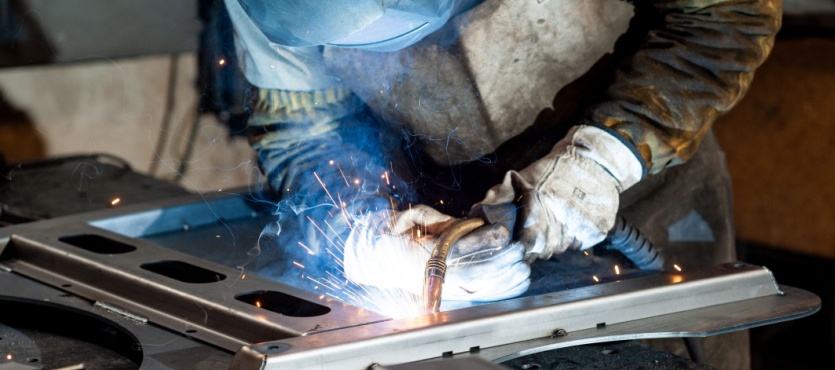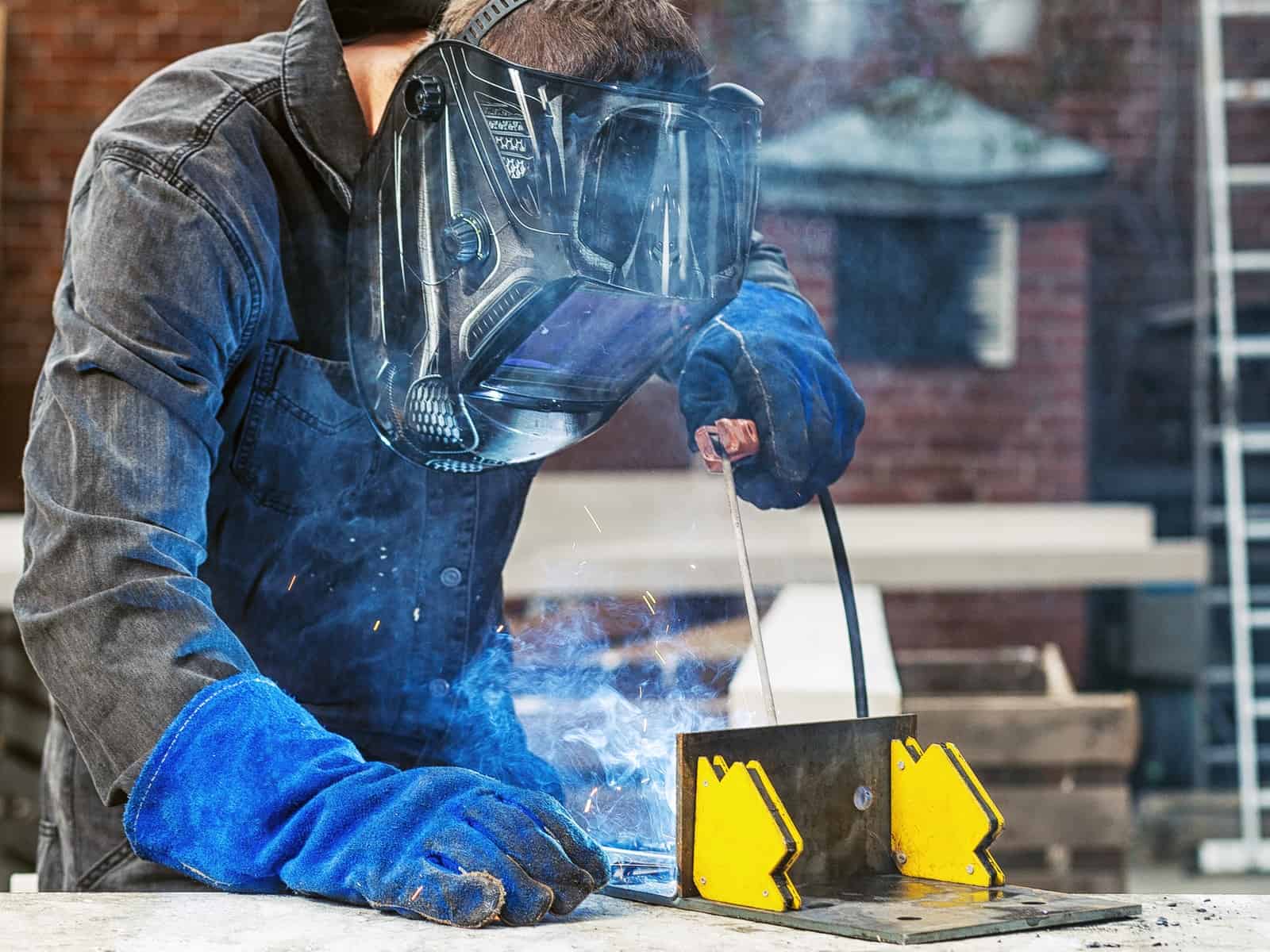Common problems explained and solved by Montana Mobile Welding and Repair Belgrade Fabrication
Wiki Article
Typical Welding Fixing Issues and Exactly How to Address Them Successfully
Welding fixings often encounter a variety of concerns that can threaten the stability of the end product. Typical issues consist of inadequate infiltration, porosity, and imbalance, among others. Each flaw presents special obstacles that call for particular methods for resolution. Understanding these problems is vital for welders aiming to enhance their skills and end results. This discussion will explore these typical welding repair issues and effective techniques to address them.Inadequate Infiltration
Inadequate penetration occurs when the weld steel stops working to completely fuse with the base material, leading to weak joints and potential structural failings. This problem commonly comes from insufficient warmth input, inaccurate electrode angle, or improper welding speed. Welders might encounter inadequate penetration as a result of a miscalculation of the necessary specifications for a details product density or kind. In addition, contamination on the base product's surface can prevent effective bonding, aggravating the issue. To resolve inadequate penetration, welders should assure proper setups on their equipment and keep a tidy job surface area. Normal examination of welds is advised to recognize any kind of deficiencies early, allowing for prompt corrections and the avoidance of endangered architectural stability in bonded assemblies.Porosity
Porosity is a common flaw in bonded joints that materializes as little gas bubbles caught within the weld metal. This defect can jeopardize the integrity of the weld, leading to lowered strength and prospective failing under stress. Welding. Porosity generally occurs from contamination, dampness, or incorrect welding strategies, which allow gases to get away into the molten weld pool. To attend to porosity, welders must ensure proper surface area preparation, preserve a clean workplace, and make use of suitable welding criteria. Furthermore, choosing the best filler product and protecting gas can reduce gas entrapment. Normal inspection and screening of welds can help determine porosity early, ensuring timely corrective activities are taken, thereby protecting the top quality and dependability of the welded structureMisalignment
Imbalance in welding can develop from numerous aspects, including inappropriate configuration and thermal development. Understanding the origin is important for reliable resolution. Numerous modification strategies are available to straighten parts and assure structural stability.Causes of Misalignment
Welding misalignment commonly stems from a range of underlying problems that can compromise architectural stability. One key cause is inappropriate fit-up of components before welding, which can bring about spaces and uneven surfaces. Variations in thermal development during the welding procedure can likewise lead to distortion, specifically if the materials being joined have different coefficients of development. Furthermore, insufficient securing and fixturing may fail to hold parts safely in location, leading to activity throughout welding. Inadequately maintained devices, consisting of welding devices and tools, might introduce incongruities in the weld grain, further contributing to imbalance. Driver mistake, stemming from not enough training or experience, can also play a substantial duty in developing misaligned welds.
Modification Methods Readily Available
Attending to imbalance successfully needs a combination of corrective strategies customized to the particular issues available. One usual technique is the use of components or jigs to hold elements in the proper position during welding, making sure consistent positioning. Additionally, preheating the products can help in reducing distortion and improve fit-up. For substantial imbalance, mechanical adjustment methods, such as using hydraulic jacks or clamps, can be utilized to deal with the position prior to welding. Post-weld warmth therapy might likewise be required to eliminate stress and anxieties brought on by misalignment. Mindful evaluation and change throughout the arrangement stage can prevent misalignment concerns from coming to be significant issues, advertising a smoother welding process and boosting total structural integrity.Distortion
Distortion is a common obstacle in welding that can emerge from numerous factors, consisting of uneven heating & cooling. Comprehending the sources of distortion is crucial for applying efficient avoidance strategies. Addressing this concern not only boosts structural stability but likewise improves the general quality of the weld.Sources of Distortion
When subjected to the intense warmth of welding, materials frequently undertake changes that can cause distortion. This sensation mostly arises from thermal development and contraction throughout the welding process. As the weld location warms up, the product broadens; upon cooling, it acquires, which can produce inner tensions. Additionally, uneven home heating throughout a workpiece can worsen these tensions, resulting in warping or flexing. The kind of material likewise plays a significant function; steels with differing thermal conductivity and coefficients of expansion may react in different ways, causing unpredictable distortions. In addition, bad joint layout and insufficient fixturing can add to imbalance during welding, boosting the possibility of distortion. Comprehending these causes is crucial for effective welding repair work and prevention methods.Avoidance Techniques
Effective prevention techniques for distortion throughout welding concentrate on managing warmth input and making sure correct joint layout. Maintaining a regular heat input helps to lessen thermal growth and tightening, which can lead to distortion. Utilizing strategies such as preheating the work surface can likewise minimize the temperature gradient, promoting uniform home heating. In addition, selecting appropriate joint layouts, such as T-joints or lap joints, can improve stability and minimize stress concentrations. Implementing appropriate fixturing to secure the work surfaces in position additionally aids in keeping placement throughout the welding process. Staggered welding series can disperse warm more equally, protecting against local distortion. By using these techniques, welders can considerably lower the likelihood of distortion and improve the general top quality of their welds.Fracturing
Breaking is a common issue encountered in welding fixings, typically resulting from various factors such as inappropriate cooling prices, material choice, or insufficient joint prep work. The incident of fractures can substantially compromise the honesty of the weld, causing potential failings throughout operation. To resolve this issue, welders should first assess the root causes, guaranteeing that products are compatible and suitably chosen for the specific application. Furthermore, controlling the cooling rate throughout the welding procedure is essential; fast air conditioning can cause stress and lead to splitting. Proper joint style and prep work likewise contribute to lessening the danger. Executing these techniques can boost weld quality and durability, ultimately lowering the chance of breaking in finished weldments.
Insufficient Combination
A significant issue in welding repair work is incomplete fusion, which occurs when the weld steel does not sufficiently bond with the base product or previous weld passes - Montana Mobile Welding and Repair Belgrade Fabrication. This defect can lead to weak points in the joint, possibly endangering the integrity of the welded framework. Elements adding to insufficient blend include not enough warm input, inappropriate welding strategy, and contamination of the surface areas being signed up with. To address this concern efficiently, welders must guarantee correct pre-weld cleaning and surface area preparation, along with readjust their welding parameters to achieve ample infiltration and blend. Regular inspection during the welding process can additionally help recognize insufficient fusion early, permitting for timely restorative measures to boost the general quality of the weldOverheating
While welding repairs can boost architectural stability, overheating offers a substantial challenge that can lead to product deterioration. Extreme warm throughout welding can alter the mechanical properties of metals, resulting in lowered strength, boosted brittleness, and warping. This sensation is specifically essential in high-stress applications where structural integrity is critical. Identifying overheating can entail visual inspections for discoloration or distortion, in addition to checking temperature throughout the welding process. To minimize the threats linked with getting too hot, welders ought to employ ideal strategies, such as regulating heat input, adjusting traveling rate, and using suitable filler materials. Additionally, executing pre- and post-weld warm therapies can assist bring back product buildings and boost the total high quality of the repair service, ensuring lasting efficiency and security.Often Asked Questions
What Are the Common Signs of a Welding Issue?

Just How Can I Evaluate My Welds for Top quality?
To test welds for high quality, one can utilize aesthetic evaluations, ultrasonic screening, and radiographic approaches. Each strategy ensures structural integrity, recognizes flaws, and confirms adherence to specified requirements, inevitably enhancing the reliability of the welded joints.What Safety Safety Measures Should I Take While Welding?
When welding, one ought to focus on safety and security by using appropriate individual safety devices, ensuring correct air flow, securing combustible products away, preserving a clean workspace, and knowing surroundings to stop crashes and injuries.Can I Fix a Weld Without Renovating the Entire Joint?
Repairing a weld without remodeling the entire joint is possible, depending on the damages (Fabrication). Methods such as grinding, including filler product, or making use of a welding procedure can efficiently resolve certain defects while preserving the bordering frameworkWhat Equipment Are Crucial for Reliable Welding Services?
Necessary devices for reliable welding repair services consist of a welding machine, cord brush, grinder, safety equipment, clamps, and filler materials. Each tool plays more info a vital role in guaranteeing quality and safety during the fixing procedure. Porosity generally occurs from contamination, wetness, or improper welding methods, which permit gases to get away right into the liquified weld swimming pool. Inadequately maintained devices, consisting of welding equipments and tools, might present variances in the weld grain, additional adding to imbalance. When subjected to the intense warm of welding, materials often undergo changes that can lead to distortion. Fracturing is an usual issue run into in welding fixings, usually resulting from various elements such as inappropriate cooling prices, product choice, or inadequate joint preparation. A significant problem in welding repair services is insufficient blend, which occurs when the weld metal does not appropriately bond with the base product or previous weld passes.Report this wiki page